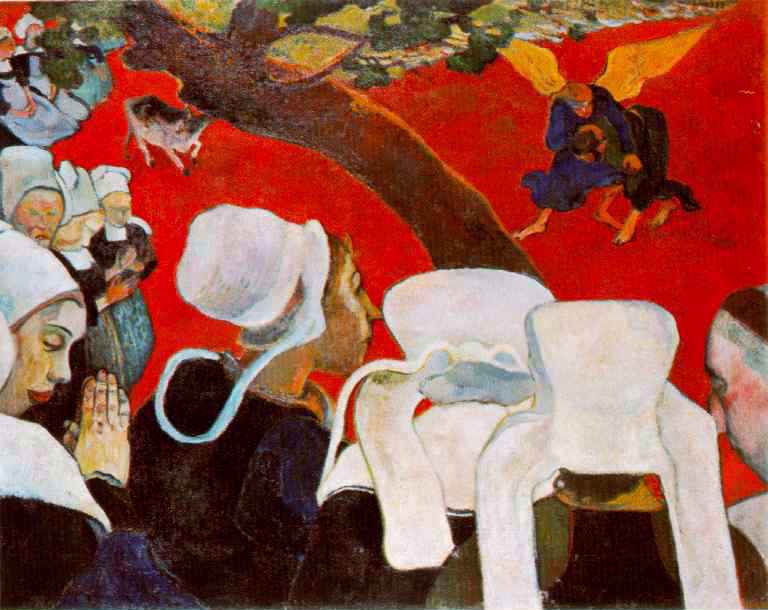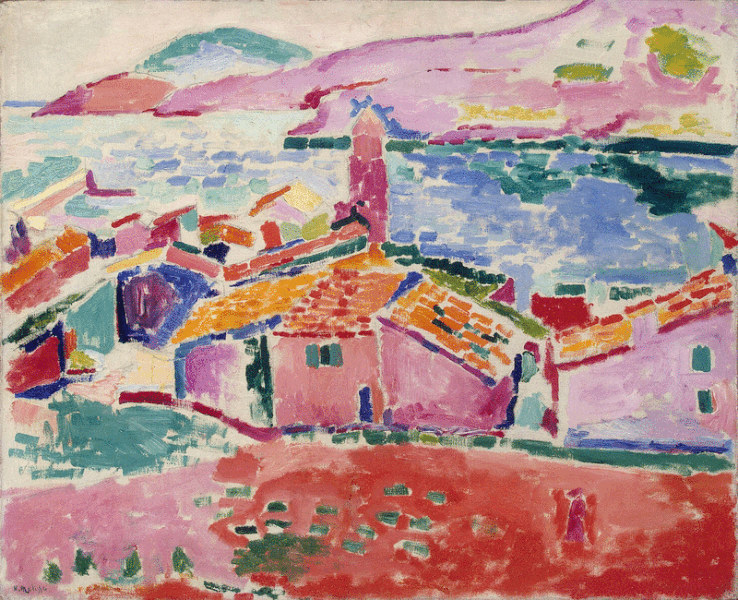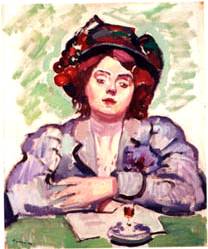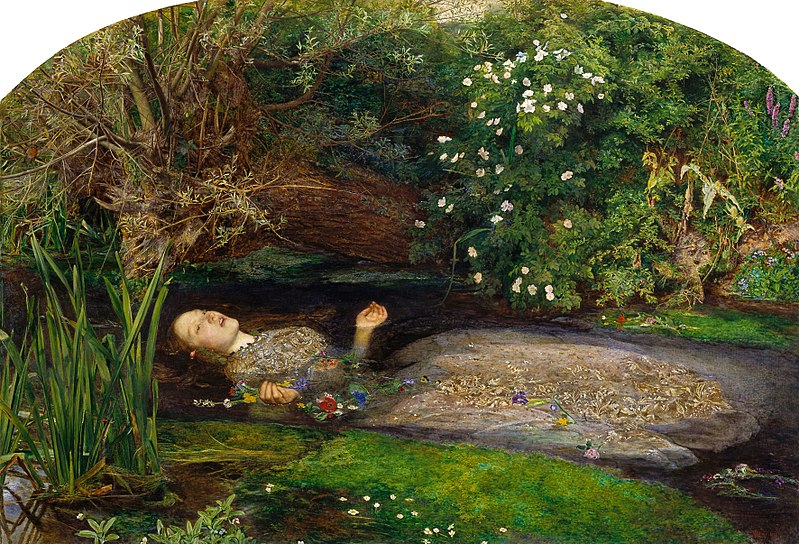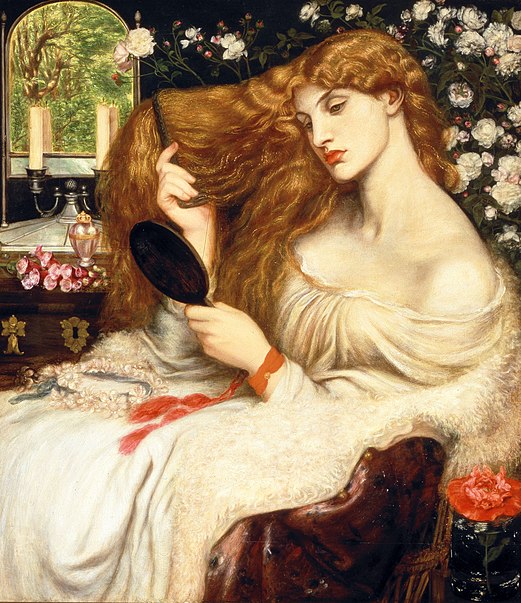 |
| Giacomo Balla |
Futurism came into being with the appearance of a manifesto published by the poet Filippo Marinetti on the front page of the February 20, 1909, issue of Le Figaro. It was the very first manifesto of this kind.
Marinetti summed up the major principles of the Futurists. He and others espoused a love of speed, technology and violence. Futurism was presented as a modernist movement celebrating the technological, future era. The car, the plane, the industrial town were representing the motion in modern life and the technological triumph of man over nature. Some of these ideas, specially the use of modern materials and technique, were taken up later by Marcel Duchamp (French, 1887-1968), the cubist, the constructivist and the dadaist.
Futurism was inspired by the development of Cubism and went beyond its techniques. The Futurist painters made the rhythm of their repetitions of lines. Inspired by some photographic experiments, they were breaking motion into small sequences, and using the wide range of angles within a given time-frame all aimed to incorporate the dimension of time within the picture. Brilliant colors and flowing brush strokes also additionally were creating the illusion of movement. Futurism influenced many other 20th century art movements, including Art Deco, Vorticism, Constructivism and Surrealism.
Futurists mixed activism and artistic research. They organized events that caused scandal. Everything was there to help them to glorify Italy and lead their country into the age of modernity. Certain Futurists vehemently promoted themselves to try to join forces with the Fascists, who were coming to power at the time. But Mussolini showed a preference for the Novecento Italiano, movement of artists who identified with the classical order and Italian heritage.
Futurism was a largely Italian movement, although it also had adherents in other countries, France and most notably Russia. Close to Futurism with its inspirations and motivations was Precisionism, an important development of American Modernism.
Although Futurism itself is now regarded as extinct, having died out during the 1920s, powerful echoes of Marinetti's thought, still remain in modern, popular culture and art. Futurism influenced many other 20th century art movements, including Art Deco, Vorticism, Constructivism and Surrealism.
Futurism was inspired by the development of Cubism and went beyond its techniques. The Futurist painters made the rhythm of their repetitions of lines. Inspired by some photographic experiments, they were breaking motion into small sequences, and using the wide range of angles within a given time-frame all aimed to incorporate the dimension of time within the picture. Brilliant colors and flowing brush strokes also additionally were creating the illusion of movement. Futurism influenced many other 20th century art movements, including Art Deco, Vorticism, Constructivism and Surrealism.
Futurists mixed activism and artistic research. They organized events that caused scandal. Everything was there to help them to glorify Italy and lead their country into the age of modernity. Certain Futurists vehemently promoted themselves to try to join forces with the Fascists, who were coming to power at the time. But Mussolini showed a preference for the Novecento Italiano, movement of artists who identified with the classical order and Italian heritage.
Futurism was a largely Italian movement, although it also had adherents in other countries, France and most notably Russia. Close to Futurism with its inspirations and motivations was Precisionism, an important development of American Modernism.
Although Futurism itself is now regarded as extinct, having died out during the 1920s, powerful echoes of Marinetti's thought, still remain in modern, popular culture and art. Futurism influenced many other 20th century art movements, including Art Deco, Vorticism, Constructivism and Surrealism.
Futurist Architecture
 The Futurist architect Antonio Sant'Elia expressed his ideas of modernity in his drawings for La Città Nuova (The New City) (1912–1914). This project was never built and Sant'Elia was killed in the First World War, but his ideas influenced later generations of architects and artists. The city was a backdrop onto which the dynamism of Futurist life is projected. The city had replaced the landscape as the setting for the exciting modern life. They wanted to see the bare bones, the structure behind things as part of the aesthetic quality. Sant'Elia aimed to create a city as an efficient, fast-paced machine. He manipulates light and shape to emphasize the sculptural quality of his projects. Baroque curves and encrustations had been stripped away to reveal the essential lines of forms unprecedented from their simplicity. In the new city, every aspect of life was to be rationalized and centralised into one great powerhouse of energy. The city was not meant to last, and each subsequent generation was expected to build their own city rather than inheriting the architecture of the past.Futurist architects were sometimes at odds with the Fascist state's tendency towards Roman imperial-classical aesthetic patterns. Nevertheless, several Futurist buildings were built in the years 1920–1940, including public buildings such as railway stations, maritime resorts and post offices. Examples of Futurist buildings still in use today are Trento's railway station, built by Angiolo Mazzoni, and the Santa Maria Novella station in Florence. The Florence station was designed in 1932 by the Gruppo Toscano (Tuscan Group) of architects, which included Giovanni Michelucci and Italo Gamberini, with contributions by Mazzoni.
The Futurist architect Antonio Sant'Elia expressed his ideas of modernity in his drawings for La Città Nuova (The New City) (1912–1914). This project was never built and Sant'Elia was killed in the First World War, but his ideas influenced later generations of architects and artists. The city was a backdrop onto which the dynamism of Futurist life is projected. The city had replaced the landscape as the setting for the exciting modern life. They wanted to see the bare bones, the structure behind things as part of the aesthetic quality. Sant'Elia aimed to create a city as an efficient, fast-paced machine. He manipulates light and shape to emphasize the sculptural quality of his projects. Baroque curves and encrustations had been stripped away to reveal the essential lines of forms unprecedented from their simplicity. In the new city, every aspect of life was to be rationalized and centralised into one great powerhouse of energy. The city was not meant to last, and each subsequent generation was expected to build their own city rather than inheriting the architecture of the past.Futurist architects were sometimes at odds with the Fascist state's tendency towards Roman imperial-classical aesthetic patterns. Nevertheless, several Futurist buildings were built in the years 1920–1940, including public buildings such as railway stations, maritime resorts and post offices. Examples of Futurist buildings still in use today are Trento's railway station, built by Angiolo Mazzoni, and the Santa Maria Novella station in Florence. The Florence station was designed in 1932 by the Gruppo Toscano (Tuscan Group) of architects, which included Giovanni Michelucci and Italo Gamberini, with contributions by Mazzoni.The Legacy of Futurism
Futurism influenced many other twentieth century art movements, including Art Deco, Vorticism, Constructivism, Surrealismand Dada. Futurism as a coherent and organized artistic movement is now regarded as extinct, having died out in 1944 with the death of its leader Marinetti, and Futurism was, like science fiction, in part overtaken by 'the future'.
Nonetheless the ideals of Futurism remain as significant components of modern Western culture; the emphasis on youth, speed, power and technology finding expression in much of modern commercial cinema and culture. Ridley Scott consciously evoked the designs of Sant'Elia in Blade Runner. Echoes of Marinetti's thought, especially his "dreamt-of metallization of the human body", are still strongly prevalent in Japanese culture, and surface in manga/anime and the works of artists such as Shinya Tsukamoto, director of the "Tetsuo" (lit. "Ironman") films; Marinetti's legacy is also obvious in philosophical ingredients oftranshumanism, especially in Europe. Futurism has produced several reactions, including the literary genre of cyberpunk—in which technology was often treated with a critical eye—whilst artists who came to prominence during the first flush of the Internet, such as Stelarc and Mariko Mori, produce work which comments on Futurist ideals.
A revival of sorts of the Futurist movement began in 1988 with the creation of the Neo-Futurist style of theatre in Chicago, which utilizes Futurism's focus on speed and brevity to create a new form of immediate theatre. Currently, there are active Neo-Futurist troupes in Chicago, New York, and Montreal.
A revival of sorts of the Futurist movement began in 1988 with the creation of the Neo-Futurist style of theatre in Chicago, which utilizes Futurism's focus on speed and brevity to create a new form of immediate theatre. Currently, there are active Neo-Futurist troupes in Chicago, New York, and Montreal.




